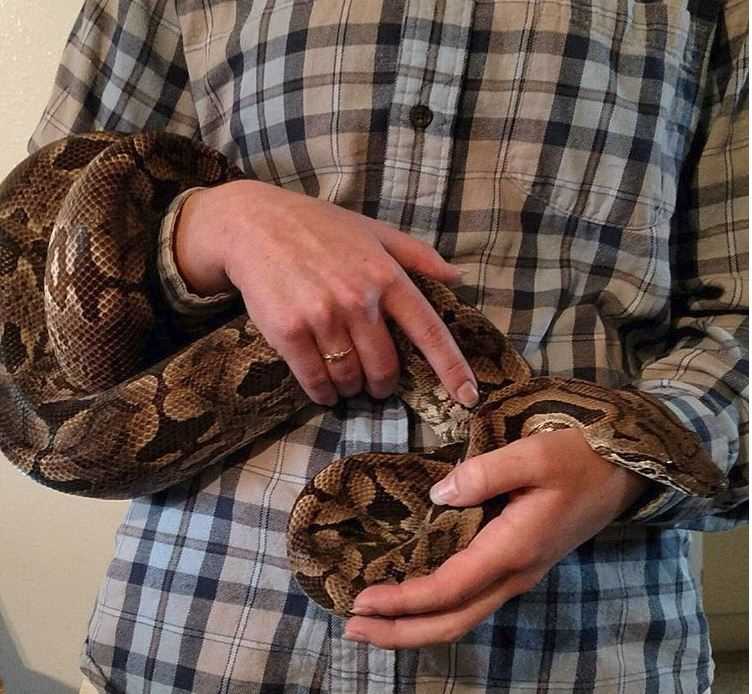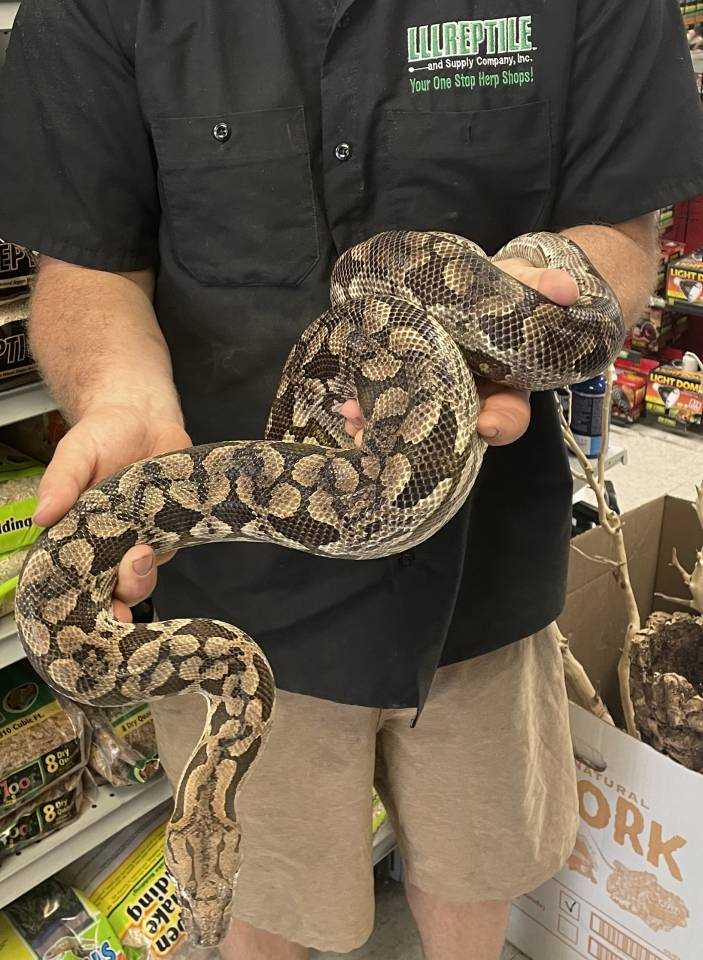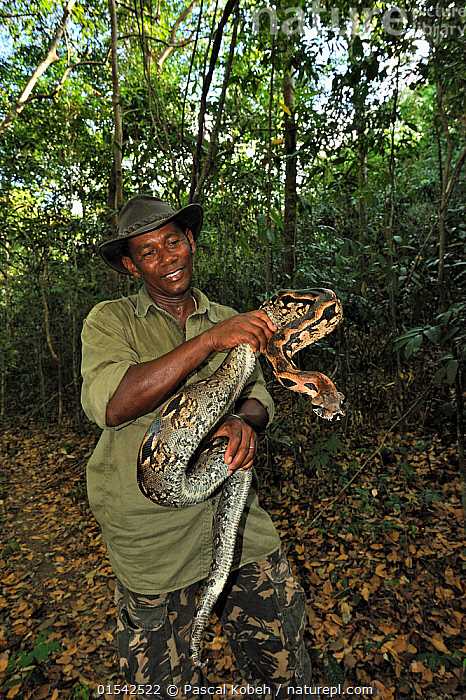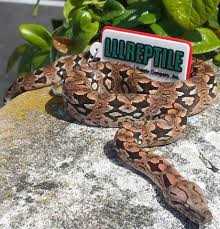The size of a Dumerils Boa can vary depending on several factors, including feeding habits and the size of the enclosure. A well-fed and properly cared for Dumerils Boa can grow to an average length of 6 to 7 feet, with some individuals reaching even larger sizes. Their robust body structure adds to their overall size and presence, making them an impressive snake to own.
Feeding plays a crucial role in determining the size of a Dumerils Boa. A diet consisting of appropriate prey items, such as rats and rabbits, helps them grow and develop properly. Good nutrition is essential for their overall health and growth. Regular feeding and monitoring their body condition is important to ensure they are growing at a healthy rate.
Dumerils boas can grow to be quite large, with males generally reaching smaller sizes than females. Adult females can reach lengths of 6 to 8 feet, while males typically reach lengths of 4 to 6 feet. However, there can be variations within the species, with some individuals potentially growing larger or smaller than average.
The size of a Dumerils boa is influenced by several factors, including genetics, diet, and environmental conditions. Proper feeding is crucial for their growth and development. A varied diet of appropriately sized prey items helps ensure that they receive the necessary nutrients for healthy growth.
Measuring the size of a Dumerils boa is relatively straightforward. Simply measure the snake from the tip of its nose to the end of its tail. Keep in mind that these snakes can be quite heavy, so it may require two people to handle them for accurate measurements.
Factors Affecting Dumerils Boa Size
1. Enclosure Size: The size of the enclosure plays a crucial role in the growth of Dumerils boas. Inadequate space can limit their ability to move and explore, which can inhibit their growth. It is recommended to provide a spacious and appropriately sized enclosure to ensure the snake’s comfort and promote healthy growth.
2. Feeding: Proper nutrition is vital for the growth of Dumerils boas. These snakes are carnivorous and require a diet consisting of appropriately sized rodents. The frequency and amount of food offered should be consistent with the snake’s age and size. Feeding a balanced diet is essential to ensure optimal growth and development.
3. Genetic Factors: The genetic makeup of Dumerils boas can also influence their size. Some individuals may have genes that predispose them to grow larger or smaller than average. Breeders carefully select breeding pairs to produce offspring with desirable size traits, but there can still be natural variations within a population.
4. Environmental Factors: The environmental conditions in which Dumerils boas are kept can affect their growth. Suitable temperature gradients, humidity levels, and lighting conditions need to be maintained in the enclosure to support healthy growth. A properly set up habitat can contribute to the snake’s overall size and well-being.
5. Age: Like most reptiles, Dumerils boas grow rapidly during their early years. Young snakes have a higher growth rate compared to adults. Providing optimal care during this time is crucial for promoting healthy growth and ensuring that the snake reaches its full potential size.
6. Gender: There is a significant size difference between male and female Dumerils boas. Females tend to be larger and bulkier than males. This sexual dimorphism is a natural characteristic of the species and should be taken into account when considering the ultimate size potential of a Dumerils boa.
7. Health and Husbandry: The overall health and well-being of a Dumerils boa can affect its size. Proper husbandry practices, regular veterinary check-ups, and disease prevention techniques are essential for promoting optimal growth. Any health issues or underlying conditions should be promptly addressed to ensure the snake’s well-being.
Age and Growth of Dumerils Boas
Dumerils boas, like other reptiles, continue to grow throughout their lives. However, their growth rate is not constant and varies according to several factors. These factors include genetics, nutrition, temperature, and overall health.
Typically, Dumerils boas reach sexual maturity at around 3 to 5 years of age. At this stage, they have usually reached a size that allows for breeding. However, their growth may continue for several more years, with some individuals reaching lengths of up to 6 to 8 feet.
Managing Dumerils Boa Growth

Dumerils boas kept in captivity should be provided with an enclosure that allows for adequate movement and exercise. A spacious enclosure with proper hiding spots and climbing structures supports their natural behavior and promotes optimal growth.
Regular monitoring of the snake’s growth is crucial to ensure it is on track and not experiencing any health issues. Owners can measure the length and weight of their Dumerils boas periodically to keep track of their growth rate.
It’s also important to provide a proper temperature gradient within the enclosure. Snakes require a thermal gradient to regulate their body temperature, which aids in digestion and overall health. The enclosure should have a warm side and a cooler side, mimicking their natural habitat.
The Role of Size in Breeding
The size of a male Dumerils boa can directly impact its ability to breed successfully. Larger males tend to have a higher sperm count and are more likely to be successful in mating with females. Additionally, larger males are often preferred by female Dumerils boas, which may increase the chances of successful breeding.
Factors Affecting Male Dumerils Boa Size

Several factors can influence the size of male Dumerils boas. Genetics is a significant factor, as certain bloodlines may produce larger or smaller individuals. Additionally, environmental factors such as temperature, humidity, and diet can impact the growth and size of these snakes.
Proper feeding is crucial for male Dumerils boas to reach their potential size. A well-balanced diet consisting of appropriately sized prey items will support healthy growth.
Measuring Male Dumerils Boa Size
Measuring the size of a male Dumerils boa is relatively straightforward. The length of the snake from the tip of its snout to the end of its tail is the most common measurement used. This measurement provides a good indication of the overall size and growth of the snake.
Additionally, the girth of the snake can also be measured. This measurement is taken at the thickest part of the snake’s body and can give further insight into its overall size.
Regularly monitoring and recording the size of male Dumerils boas is important for breeders. This information can be used to track growth rates and identify any potential health issues that may arise.
Implications for Owners
Feeding is another essential aspect to consider. The size and prey requirements of male Dumerils boas can vary based on their size. Providing appropriately sized prey items will ensure proper nutrition and healthy growth.
Female Dumerils Boa Size for Breeding Purposes

The minimum size for breeding female Dumerils boas is around 4 to 5 feet in length. This ensures that they have reached sexual maturity and are physically capable of carrying and giving birth to a litter of baby boas. It is recommended to wait until the female boa is at least 4 years old before attempting to breed her, as this allows her ample time to reach the desired size and maturity.
Determining the Size of Female Dumerils Boas
Measuring the size of a female Dumerils boa is relatively simple. A common method is to measure the length of the snake from the tip of its nose to the end of its tail. Another method is to measure the snake’s girth, which is the circumference of the snake’s thickest part around the midsection of its body.
Feeding and Managing Female Dumerils Boas for Breeding

In order to reach the ideal breeding size, female Dumerils boas require a well-balanced diet. They should be fed appropriately-sized prey items, such as small to medium-sized rats, every 1 to 2 weeks. This ensures that they receive the necessary nutrients for growth and development.
It is essential to monitor the female boa’s growth throughout their development to ensure they are on track to reach the desired size. Regular weighing and measuring can help snake breeders track their progress and make adjustments to their diet if necessary. Additionally, providing a stress-free and comfortable environment is crucial, as stress can negatively impact the growth and reproductive capabilities of the female boa.
Breeding female Dumerils boas should be kept at optimal temperature and humidity levels. This helps promote healthy growth and reproductive behavior. Proper lighting and a well-designed enclosure with suitable hiding spots are also important factors to consider.
Overall, breeding female Dumerils boas requires careful attention to their size, health, and environment. By providing them with appropriate husbandry practices and ensuring they reach the necessary size and maturity, snake breeders can increase the chances of successful breeding and the production of healthy offspring.
Variations in Dumerils Boa Size
One of the factors that can influence the size of Dumerils boas is genetics. Just like with any other species, there can be genetic variations that result in snakes growing larger or smaller than average. Some individuals may simply have genes that predispose them to grow larger, while others may be on the smaller end of the spectrum.
Another factor that can affect Dumerils boa size is environmental conditions. In the wild, these snakes inhabit the forests and grasslands of Madagascar, where they have access to a variety of food sources. The availability of food and the quality of their environment can impact their growth and overall size. Snakes that have access to a steady supply of nutritious food are more likely to grow larger compared to those that have limited food resources.
Additionally, gender plays a role in determining the size of Dumerils boas. Males tend to be smaller than females, with adult males averaging around 5 to 7 feet in length, while females can reach lengths of 7 to 9 feet or more. This sexual dimorphism is common among many species of snakes and is thought to be influenced by the reproductive needs of the species.
Overall, variations in Dumerils boa size can be influenced by genetic factors, environmental conditions, and gender. These factors should be taken into consideration when housing and breeding these snakes, as providing the appropriate size and care is essential for their well-being.
Comparison of Dumerils Boa Size with Other Boa Species
In addition to their size, Dumerils boas also have a distinct appearance that sets them apart from other boa species. They have a unique pattern and coloration, with dark brown or reddish-brown scales and distinctive markings on the head and body. This makes them highly sought after by collectors and breeders alike.
Enclosure Size and Feeding
Because of their larger size, Dumerils boas require a spacious enclosure to ensure they have enough room to move around and stretch out. A minimum enclosure size of 6 feet long, 2 feet wide, and 2 feet tall is recommended for adult Dumerils boas.
Implications for Pets and Breeding
The size of Dumerils boas has implications for both pet owners and breeders. As pets, they require more space and larger enclosures compared to smaller boa species. They also need proper handling and care due to their larger size and strength.
For breeders, the larger size of Dumerils boas can be advantageous. It allows for the production of larger offspring, which can be more desirable in the reptile market. Additionally, breeding larger Dumerils boas can help maintain and improve the overall size and genetics of the species.
Dumerils Boa Size in the Wild
Feeding and reptile breeding practices significantly influence the size of Dumerils Boas in the wild. These snakes have the potential to grow to impressive lengths, making them one of the largest snake species found in their natural habitat. Adult Dumerils Boas can reach lengths of 6 to 8 feet (1.8 to 2.4 meters), although some individuals may grow even larger.
The size of Dumerils Boas in the wild can vary based on factors such as food availability, environmental conditions, and genetic variations within the population. In areas with abundant prey, these snakes tend to have better access to nutrition, which promotes healthy growth and development. Conversely, in regions with limited food resources, Dumerils Boas may experience stunted growth and remain smaller in size.
The natural habitats of Dumerils Boas, such as forests and swamp areas, also influence their size. Snakes living in dense vegetation might have restricted movement, which can inhibit their growth rate and result in smaller sizes. On the other hand, snakes residing in environments with more space and resources may have the opportunity to grow to their full potential.
Dumerils Boa Size in Captivity: What You Need to Know
In terms of feeding, the size of the Dumerils Boa also determines the appropriate prey size. As a general rule of thumb, the prey should be around 10-15% of the snake’s body weight. A proper meal size ensures that the boa receives the necessary nutrients without risking overfeeding or regurgitation.
Dumerils Boa Size for Breeding Purposes
Adequate space is essential for the breeding pair to feel comfortable and exhibit their natural behaviors. The enclosure should be large enough to accommodate both snakes comfortably, allowing them to move around and interact with each other. Providing enough space will help reduce stress and increase the chances of successful breeding.
Feeding also plays a role in the size of Dumerils boas for breeding purposes. Adequate nutrition is essential for both the male and female snakes to reach their full potential size and reproductive maturity. Providing a balanced diet that meets their nutritional needs is crucial for optimal growth and development.
Monitoring the size of the breeding pair is essential throughout the breeding process. Regular measurements of both the male and female Dumerils boas will help track their growth and ensure they are reaching the appropriate breeding size. Consistent growth is a good indication of overall health and readiness to breed.
Measuring Dumerils Boa Size
Measuring the size of your Dumerils Boa is an important aspect of caring for these reptiles. It allows you to track their growth and ensure they are healthy and thriving in their enclosure.
Measuring the length of your Dumerils Boa can be a useful tool in determining their age and growth rate. By comparing measurements taken at different times, you can track how much your snake has grown over a certain period of time. This information can be helpful in identifying any health issues or changes in their growth patterns.
Measuring Dumerils Boa size is also important for breeding purposes. Breeding boas require a specific size and weight to ensure successful reproduction. By measuring your boas, you can determine if they are at the appropriate size for breeding and make informed decisions about pairing them with suitable mates.
Regularly measuring your Dumerils Boa’s size is crucial for keeping accurate records and monitoring their growth and development. It can also be helpful in identifying any issues with feeding or growth, as sudden changes in size can indicate health problems or improper care.
Conclusion
Measuring your Dumerils Boa’s size is an essential part of responsible pet ownership. It allows you to track their growth, monitor their health, and make informed decisions about their care. Whether you are a beginner snake owner or an experienced breeder, regularly measuring your Dumerils Boa’s size will help ensure they are thriving in their enclosure.
Managing Dumerils Boa Growth
The frequency of feeding also impacts the growth of Dumerils boas. Young snakes may require more frequent feedings, such as every 5-7 days, while adult boas can be fed less frequently, such as every 10-14 days. Monitoring their body condition and adjusting the feeding schedule accordingly is crucial to ensure proper growth.
The size of the enclosure is another important factor to consider when managing the growth of Dumerils boas. Snakes that are housed in enclosures that are too small may experience stunted growth or other health issues. Providing them with a spacious enclosure that allows for movement and exercise is essential. The enclosure should also include appropriate hiding spots and climbing opportunities to cater to their natural instincts.
Proper care also contributes to the growth of Dumerils boas. Maintaining proper temperature and humidity levels in their enclosure is essential for their overall health and growth. Regular cleaning and maintenance of the enclosure help prevent stress and disease, which can hinder their growth. Providing them with a stress-free and comfortable environment is key.
Implications of Dumerils Boa Size for Owners
Boa Pets: The size of Dumerils Boas makes them suitable pets for experienced reptile owners who have the knowledge and resources to accommodate their size. These boas can reach lengths of up to 6 to 8 feet, so owners must be prepared to provide a spacious enclosure and handle a large, powerful snake.
Enclosure: The size of Dumerils Boas also dictates the size and type of enclosure they require. These snakes need a large, secure, and appropriately heated enclosure that allows them to move and stretch their bodies fully. Providing an enclosure that meets their size requirements is vital for their well-being.
Snake Health: Monitoring the size of Dumerils Boas is important for their overall health. Rapid or excessive growth can indicate improper feeding or environmental conditions. Regularly measuring and monitoring the growth of these boas can help owners detect any potential health issues and take appropriate action.
| Implications of Dumerils Boa Size for Owners |
|---|
| Feeding |
| Boa Pets |
| Breeding |
| Enclosure |
| Snake Health |

I’m Lena Adams—a product of an unconventional upbringing in the African wilderness. My father, a daring explorer of African wildlife, sparked my fascination with reptiles, a passion that intertwined with the tragic loss of my mother during an expedition, leaving an indelible mark on my life. Driven to understand the creatures that captivated my parents, I embarked on my journey, sharing insights about reptiles, frogs, and lizards on my website. Through my explorations and conservation efforts, I honour my family’s legacy while seeking connections—to the creatures, nature, and the mother whose presence I yearn to understand.
